|
The MPCA continues the funding round for the state Clean Water Partnership Program. The agency is accepting proposals through July 3 for grants and loans to facilitate projects that control nonpoint source pollution.
The MPCA anticipates that about $1.1 million of grant funds and about $7 million of loan funds will be available this year. At least $2 million of the loan funds will be set aside for Green Infrastructure Reserve. These proposals provide permanent stormwater treatment by preserving or restoring the site’s natural hydrologic processes through green infrastructure projects such as, but not limited to:
- Rain water harvesting and reuse;
- Rain gardens;
- Green roofs;
- Tree boxes;
- Porous pavement
- Street and parking lot redesign; or
- Similar green infrastructure approaches.
Flood control may be a component, but not the primary objective of a project under this green infrastructure reserve.
The nonpoint source pollution project must be categorized either as protection or restoration:
- The proposer of a protection project will document that the water body(ies) being addressed are currently meeting state water quality standards for a particular pollutant, or have not been assessed by the MPCA but are otherwise known to be supporting beneficial uses.
- The proposer of a restoration project will document that the water body (ies) being addressed are impaired. These projects may or may not have a completed TMDL study or Watershed Restoration and Protection Strategy (WRAPS).
Priority for funding will be given to protection projects, Green Infrastructure Reserve loan projects, and loan projects of at least $100,000 that are requesting up to $10,000 for grant to administer the loan. Project proposals must provide measurable project outcomes.
The complete Request for Proposal (RFP), proposal form, and other information are available on the state SWIFT e-supplier portal. It is listed as Event Number 2000002720 on the right side of the page. Prospective responders must have a SWIFT Vendor ID and Supplier Portal Account set up to apply. Please note that it can take up to four days to receive your vendor ID from SWIFT. If you need assistance registering in the Supplier Portal so you can bid on this solicitation, you may contact the Minnesota Department of Administration, Materials Management Division at 651-201-8100, option 1. Then follow the prompts to connect you to the correct contact person.
Proposals must be electronically received through the state SWIFT supplier portal by 4:30 p.m. on Thursday, July 3, 2014. Proposals received after the deadline will not be considered. This date and all other information in this notice are subject to change and only up to date information will be found in the SWIFT Vendor ID and Supplier Portal Account.
Questions may be e-mailed to Contracts.pca@state.mn.us, Attention: Tracey Josephson.
 The Clearwater River Watershed District recently received a 2014 Environmental Initiative Award in the Natural Resources Category for a unique partnership partly funded by the MPCA. The Clearwater River Watershed District program helps farmers optimize yields and protects water quality, providing a model that can be implemented state-wide.
In 2009, the District partnered with local agricultural co-ops to test whether cost-share would motivate area producers to optimize their use of fertilizer. The cost-share provided for systematically testing soil for nutrient requirements, and then applying fertilizer at a variable rate based on the results.
The District tracked the resulting amount of fertilizer application, crop yield, nutrient export and cost savings for the producer. The pilot study found that participants applied less fertilizer, saved money, increased crop yield, and reduced nutrients exported to local waters. The results were so promising the District secured an EPA Section 319 grant to expand the program from the 1,000 pilot acres to 16,000 additional acres. This expanded project is currently on-going. For more information about the project, including enrollment, visit the District's website at www.crwd.org.
Photo above: Members of the Clearwater River Watershed District Board, from left, are Paul DeGree, Robert Rocheleau, Robert Schiefelbein, Mary Ellen Wells and Jeff Golden
|
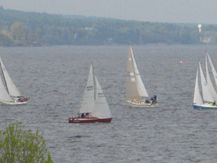 North Shore residents living between Duluth and State Highway 1 and others interested in the Lake Superior watershed’s condition are invited to attend one of five meetings during June.
The informational meetings are being sponsored by the MPCA and the South St. Louis Soil and Water Conservation District. The meetings are scheduled for:
- June 14, noon, Cove Point Lodge, Beaver Bay
- June 16, 5:30 p.m., AmericInn Lodge, Silver Bay
- June 18, 5:30 p.m., Duluth Heights Community Center, Duluth
- June 19, 11:30 a.m., Finland Community Center, Finland
- June 24, 5:30 p.m., Two Harbors Community Center, Two Harbors.
The program will be the same for each of the meetings. There will be a complimentary meal plus time for local citizens to share stories and information about the lake.
MPCA water-quality experts spent last summer conducting intensive monitoring as part of a 10-year cycle to learn more about the Lake Superior-South watershed and the wildlife that depend on it. The health of the 402,371-acre watershed is important because so many of its rivers and tributaries drain into Lake Superior and any problems identified could impact all areas downstream.
For more information and to RSVP for a meeting, call the South St. Louis Soil and Water Conservation District at 218-723-4867.
|
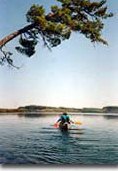
Water quality experts will kick off a multi-year intensive protection and restoration process for the Rainy River-Headwaters watershed in northern Minnesota at a public informational meeting on June 19, according to the MPCA.
The headwaters watershed is an international natural resource that contains about 95 percent of the Boundary Waters Canoe Area Wilderness and most of Voyageurs National Park. The Canadian portion contains Quetico Provincial Park and other water resources. The watershed stretches from the Namakan Dam at Voyageurs’ National Park on the west to Gunflint and Mayhew lakes on its eastern edge.
Year-round and seasonal residents, along with the general public, are invited to attend the 6:30-8:30 p.m. meeting at the Gunflint Lodge Conference Center at 143 South Gunflint Lake, located off the Gunflint Trail outside Grand Marais. Opportunities to volunteer as a citizen lake or stream monitor and to engage in the process in other ways will also be on the agenda.
Scientists from the MPCA, the state Departments of Natural Resources and Health, along with U.S. Forest Service, National Park Service, U.S. Geological Survey, Lake, Cook and St. Louis county staff, will start collecting water, sediment, biological and fish data to help better understand what factors are influencing water quality and the aquatic plants and animals dependent upon it.
The MPCA is rotating through all of the state’s 81 major watersheds and conducting 10 years of research, monitoring, assessment, strategy development for impaired waters and protection plans for waters needing additional help to prevent future water quality problems.
Funding for this research effort is provided by the Clean Water Land and Legacy Act, approved by Minnesota voters in 2008.
For more information, visit the Rainy River – headwaters watershed webpage. Questions about the meeting can also be addressed to Joel Peterson at 218-302-6646 or 800-756-3864.
|
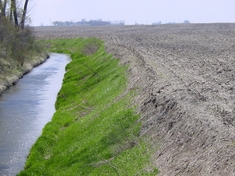 Biological stressor identification reports and summaries for the Yellow Medicine and Hawk Creek watersheds are now available on their MPCA watershed webpage.
Although the watersheds comprise a single Hydrologic Unit Code (07020004), and they share many characteristics, they are represented by separate organizations, and differ in some respects. The Yellow Medicine tumbles from the high prairie coteau in western Lincoln County. Hawk Creek begins at a leisurely pace from a chain of lakes around Willmar. Both rivers knife down through the prairie, creating 100-foot-tall or more banks before entering the Minnesota River – the Yellow Medicine in Upper Sioux Agency State Park on the south, and the Hawk from the north about one-third mile downriver.
As they enter the prairie cropland en route to the Minnesota River, they encounter similar stresses:
- Altered hydrology from ditching and tile drainage (photo above shows a ditch bank in the watershed);
- High phosphorus and nitrates;
- Sediment;
- Low dissolved oxygen; and
- Loss of habitat.
These combine in varying degrees to reduce their Index of Biotic Integrity scores – a health measure of fish, insects, and other aquatic organisms. The reports provide a detailed account of causes of biological stressors, but more monitoring will be needed to get a better understanding of the stressors.
Recommendations for reducing biological stressors include:
- Landscape changes that reduce rates and volume of runoff;
- Increasing riparian buffers;
- Crop nutrient management; and
- Stabilizing streambanks.
Much of the monitoring and implementation work is being done by the Yellow Medicine River Watershed District, and Hawk Creek Watershed Project.
|
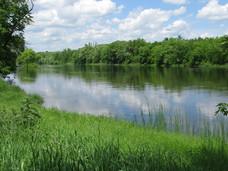 The Crow Wing River watershed biological stressor identification report is now available on its MPCA watershed webpage. The watershed is located in north central Minnesota, with its headwaters just northwest of Park Rapids, and its confluence with the Mississippi River just south of Brainerd. It includes many well-known lakes of the Akely/Nevis, Park Rapids, and Brainerd lakes areas. One of the state’s best trout streams, the Straight River, runs near Park Rapids. The Crow Wing River itself provides a large volume of water to the Mississippi River. Land use in the watershed is mostly forested and agriculture, and the largest cities are Park Rapids, Staples, and Nisswa.
Results of intensive watershed monitoring, which began in 2010, indicate that a handful of lakes and tributaries do not meet water quality standards for aquatic recreation, drinking water, and fishing. Common factors causing stress to aquatic life are low dissolved oxygen and elevated phosphorus concentrations. Agriculture is primarily livestock oriented, though there are two areas in the northern part of the watershed with dense irrigation systems that produce corn, potatoes, and soybeans. There are large tracts of managed forest, owned by a large forest products company, and harvest is common.
Developing watershed restoration and protection strategies and implementation will continue in partnership with SWCDs in Becker, Cass, Clearwater, Crow Wing, Hubbard, Morrison, Otter Tail, Todd, and Wadena counties. Another round of monitoring is scheduled to begin in 2020.
|
The MPCA recently released a video program, "Stream gets a check-up," which explains the biological monitoring efforts underway across the state. The agency encourages watershed districts, SWCDs and other local partners to show this video to their governing boards and at kickoff meetings for intensive water monitoring in their watersheds. In the program, which is less than 5 minutes long, MPCA research scientist Mike Feist explains how examining fish and bugs is like a health checkup for rivers.
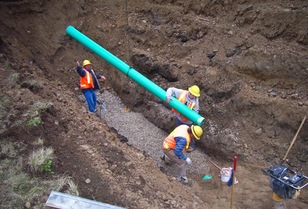 The recent emergency release of untreated wastewater to Lake Minnetonka made headlines and newscasts across the state. This event emphasizes the need to address inflow and infiltration problems throughout Minnesota (photo at right). The event also highlights the need for state agencies and local governments to be prepared to communicate to the public about emergency bypasses.
Normally, wastewater treatment systems do a great job of protecting our water. However, pumps can fail, pipes can burst, and other system components can malfunction. Sometimes, weather events such as heavy rains, rapid snow melt or flooding can overload the system. Such was the case on June 1 when a rain event caused an excess of water to enter the sewer system of several cities around the state.
This excess water enters the system through inflow and infiltration, also known as I & I:
- In some places stormwater and wastewater share the same system, leading to large volumes of stormwater going through the treatment plant.
- In other places, water in saturated ground leaks through aging pipes into the wastewater system.
- Sump pumps and tile systems discharging to the wastewater system also contribute to the problem.
When something goes wrong, or sewage treatment systems are overloaded, the wastewater has to go somewhere. Usually, it either escapes from the collection system or the system operators have to release it, untreated. The release of untreated wastewater is called a sewage bypass.
Bypassing is a "safety valve" to keep sewage from backing up into homes. When excess stormwater enters the system, the sewage becomes even more diluted, but can still contain high levels of disease-causing organisms and harmful chemicals. Bypasses should be prevented if at all possible, but can be managed when they do occur,
While bypasses happen less often than in past decades, some are inevitable because wastewater systems are complex and the weather is not controllable. Federal and state funding have helped communities across Minnesota separate their stormwater and wastewater systems. Many communities are now following plans to replace aging pipes as they rebuild streets.
The MPCA encourages watershed groups and environmental agencies to keep educating their members about the need to control stormwater:
- Make sure your sump pump discharges to the stormwater system, not the wastewater system. The same goes for tiling systems around homes and businesses.
- Support your community’s efforts to reduce I & I and replace aging infrastructure.
- When bypasses do happen, remember this is the best option to protect human health and homes.
|
The University of Minnesota is taking registrations for watershed specialist training Sept. 2-Dec. 7. This online, interactive course is designed for professionals dedicated to improving and protecting water resources. Join local government staff from around the state facing similar challenges in developing and implementing TMDLs, WRAPS, stormwater plans, comprehensive plans, and other water restoration and protection efforts, large and small.
The people who take this course are mostly staff of soil and water conservation districts, watershed districts, county environmental services departments, or cities. The course is also appropriate for staff of agencies and private firms that work with local government, and for students aspiring to careers in water resources.
For details see the Minnesota Water Resources Center website.
The University of Minnesota Extension will host two workshops on how perennial plantings/systems can improve water quality:
- Fairmont, June 24
- Glenwood, July 16
The workshops are designed to help farmers and landowners, including natural resource professionals, implement perennial plantings that would improve water quality and achieve other ecosystem services such as improved soil health and wildlife. Each day-long workshop will include presentations by local professionals, University Minnesota Extension faculty and University of Minnesota researchers.
Workshop details available on the Extension website.
The Minnesota Erosion Control Association will hold a one-day workshop and exhibit on "Repairing and Stabilizing Flood Damaged Streams and Slopes" July 23, from 8 a.m.-5 p.m. at The Inn on Lake Superior in Duluth. Visit the MECA website for details.
|